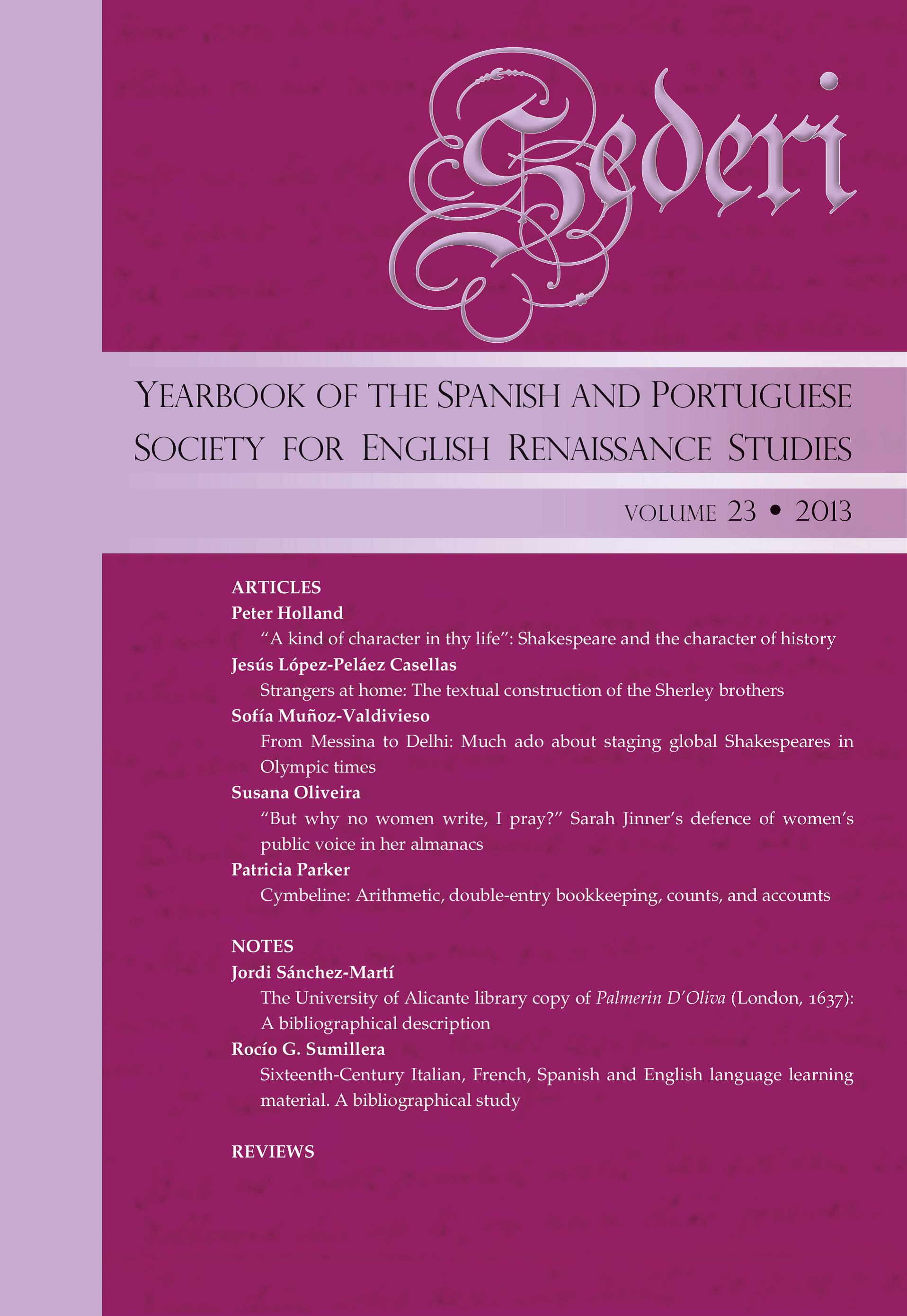Strangers at home: The Textual Construction of the Sherley Brothers
Palavras-chave:
Anthony Sherley, Robert Sherley, Thomas Sherley, seventeenth-century texts, Persia, Turkey, Spain, travel literature, pamphlet literatureResumo
During the first half of the seventeenth century various written accounts of the adventures of the three Sherley brothers – Thomas, Anthony and Robert – were published in England. These texts, in some cases written by the Sherleys themselves, often contributed to building an unproblematic and positive vision of the three brothers and their adventures in Persia, Turkey, and throughout Europe. However, an examination of the way in which all these texts (pamphlets, autobiographical writings, travel accounts, government documents, and private and official letters) interact with each other, together with the additional information provided by French and Spanish documents not accessible to an early modern audience in England, allows us to retrieve a Sherleyan narrative which, like the period in which it was produced, appears full of contradiction and new meanings.
Downloads
Downloads
Publicado
Edição
Secção
Licença
The copyright holder of the published contributions is SEDERI.The hardcopy and an open-access version of the journal will be published simultaneously. The issues will be available online in the SEDERI website (http://www.sederi.org/yearbook/) and other repositories that have signed an agreement with SEDERI.
The authors who publish with this journal agree to the following terms:
a) SEDERI retains copyright of the essay.
b) If the author wishes to republish or rewrite the essay for another journal, or include the essay published in SEDERI in their personal repositories, or in any other way, they should contact the editors to obtain permission to do so. This will entail citing SEDERI as the original source and sending the editors a copy of the new version, or the link to the website, in case of online publishing.
The author(s) hereby warrant(s) that:
a) The essay submitted for publication is an original creation and does not infringe any copyright or property right of another journal, author or publisher.
b) The essay submitted for publication has not been previously published, whole or in part, and is not being considered for publication elsewhere.
c) Written permission has been obtained for any material from other sources included in the essay submitted for publication.




